The views expressed in our content reflect individual perspectives and do not represent the authoritative views of the Baha'i Faith.
At 19, I decided to hitch-hike around the United States to share the Baha’i message of love, peace, and unity. In 1969, traveling through 40 states, my country’s beauty – and its racism – both stunned me.
“This is where I turn off, young man,” a kind farmer who had given me a ride in the cab of his old flatbed truck told me one day in Kentucky. “You can walk into town from here and catch another ride.” I stood by the side of the road, admiring the lush green farm fields on a gorgeous spring day, until I glanced up at two adjacent roadside signs. One said “City Limits.” The other said “No Darkies After Dark.”
RELATED: What I Said to a Racial Separatist

Have you ever heard of a “sundown town?” Up until that moment, I hadn’t either. But travelling through the back roads of the American South and the Midwest, I saw variations of the same warning sign on the edges of many, many places, some on small metal signs, others bigger than billboards.
The signs varied. They said “Negro, do not let the sun go down on you here” or “Whites Only After Sunset” or “Negroes not Allowed at Night.” Some of those signs did not use the word “Negro,” either – instead, they used the N-word, as blatant and ugly as you can imagine, posted right there alongside the City Limits sign, by the city fathers themselves, mounted on a steel pole, paid for by the taxpayers’ dollars.
This kind of official, institutionalized hatred made me feel physically ill. It also made me want to devote my energies to eradicating it, as the Baha’i teachings call on all people to do.

During that year-long sojourn across the country I carried a copy of The Advent of Divine Justice, written in 1938 by Shoghi Effendi, the Guardian of the Baha’i Faith. In it, he quoted Abdu’l-Baha, who said during the first years of the 20th century:
“… In origin and intention of creation mankind is one. Distinctions of race and color have arisen afterward. …
“One of the important questions … which affect the unity and the solidarity of mankind is the fellowship and equality of the white and colored races.”
After citing Abdu’l-Baha’s writings on race, Shoghi Effendi added his penetrating analysis of the racial issues in the United States:
A tremendous effort is required by both races if their outlook, their manners, and conduct are to reflect, in this darkened age, the spirit and teachings of the Faith of Baha’u’llah. Casting away once and for all the fallacious doctrine of racial superiority, with all its attendant evils, confusion, and miseries, and welcoming and encouraging the intermixture of races, and tearing down the barriers that now divide them, they should each endeavor, day and night, to fulfill their particular responsibilities in the common task which so urgently faces them.
Those Baha’i teachings impelled me to speak out about stopping prejudice and racism in the places I went. A few months later, after one of those meetings at a Baha’i center in Montgomery, Alabama, as a large interracial group of Baha’i youth talked on the porch, a car sped by. One of its passengers yelled a racial slur before spraying bullets at us all. He fired several shots, and we all quickly ducked. Luckily, no one was hit. We were just teenagers, but afterwards, when the shock of that attack began to recede, it brought the hideous, violent reality of racism home to all of us.
Years later I read a startling book on the subject, called Sundown Towns, A Hidden Dimension of American Racism, by author, professor, and White Southerner James Loewen. He said: “I thought I was going to discover maybe 10 such towns in Illinois and maybe 50 across the country. And I’ve confirmed 204 in Illinois and, in the country, thousands.”
Loewen’s book shares some startling statistics, like this one, summarized in a Washington Post article:
After the Civil War, [Loewen] says, newly freed slaves migrated all over America. In 1890, African Americans lived in all but 119 of America’s thousands of counties. But by 1930, 235 American counties had no Black residents, and 694 other counties has fewer than 10 Black residents.
What happened?
Starting around 1890, Loewen says, scores of rural towns in the West and Midwest began expelling Black people.
Our schools rarely teach the ugly reality of this apartheid period in recent American history, but the impact lives on – not only in the minds and hearts of those who suffered through them, but in the historic disparity in wealth generated by these kinds of racist, exclusionary policies. Many sundown towns and cities shamelessly advertised their prejudices for everyone to see; but others hid them by instituting restrictive racial covenants in real estate, or with governmental policies that sanctioned or failed to punish anti-Black violence, terror, and lynchings, or in tacit, unspoken agreements among leaders, law enforcement agencies, and elected officials to keep Black people out.
This exclusion has meant, for millions of Black families, that they could not build the long-term inherited wealth, primarily based on home ownership, that comparable White families did. Today in the United States, this so-called “wealth gap” is a yawning chasm – the Brookings Institute reports that in 2019, the net worth of a typical White family ($188,200) was nearly eight times greater than that of a typical Black family ($24,100).
When racism and hatred becomes institutionalized in these ways, it produces lasting generational effects.
As I write this today, the trial of the killers of Ahmaud Arbery remind me of the sundown towns I traveled through, places where any dark-skinned person could be evicted, assaulted, or even killed with impunity. Like the sundown signs once did, many places and people in America still send Black people this message: “You do not belong here.” That’s the message Arbery’s killers obviously intended to send, but the video of their crime and the public outcry it produced proved them wrong.
RELATED: In a Pool of Blackness, Finding Peace in Baha’u’llah’s Revelation
The fact that the sundown town signs no longer exist, and the reality of the guilty verdicts in that trial, made me hope that the fallacious doctrine of racial superiority may be slowly coming to an end, and that justice might just have a chance. The Baha’i teachings offer us that hopeful future with their message of equality, love, and unity:
… when the darkness of inter-racial hatred and animosity seemed to envelope mankind and blot out the divine light; when the wafting of the holy breath of God seemed to be cut off – in that time Baha’u’llah rose like a shining star from the horizon of Persia, inspired with the message of Peace and of Brotherhood among men.
He brought the light of guidance to the world; He kindled the fire of love and revealed the great reality of the True Beloved. He sought to destroy the foundations of religious and racial prejudice and of political rivalry.
He likened the world of humanity to a tree, and all the nations to its branches and the people to its leaves, buds and fruits.
His mission was to change ignorant fanaticism into Universal love, to establish in the minds of His followers the basis of the unity of humanity and to bring about in practice the equality of mankind. He declared that all men were equal under the mercy and bounty of God.
May those aspirational words, from a speech Abdu’l-Baha gave in London more than a century ago, increasingly represent our true reality.





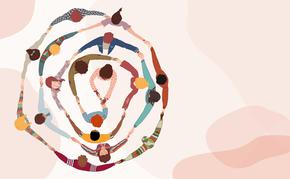

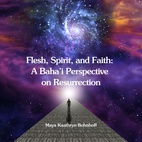
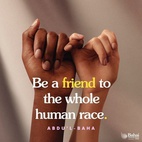
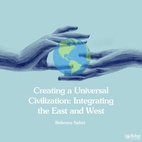
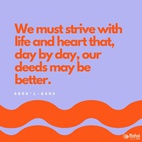
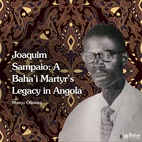
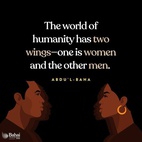
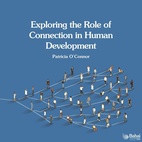
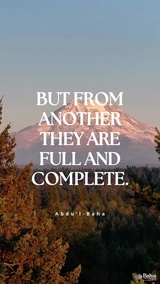


Comments
Sign in or create an account
Continue with Googleor